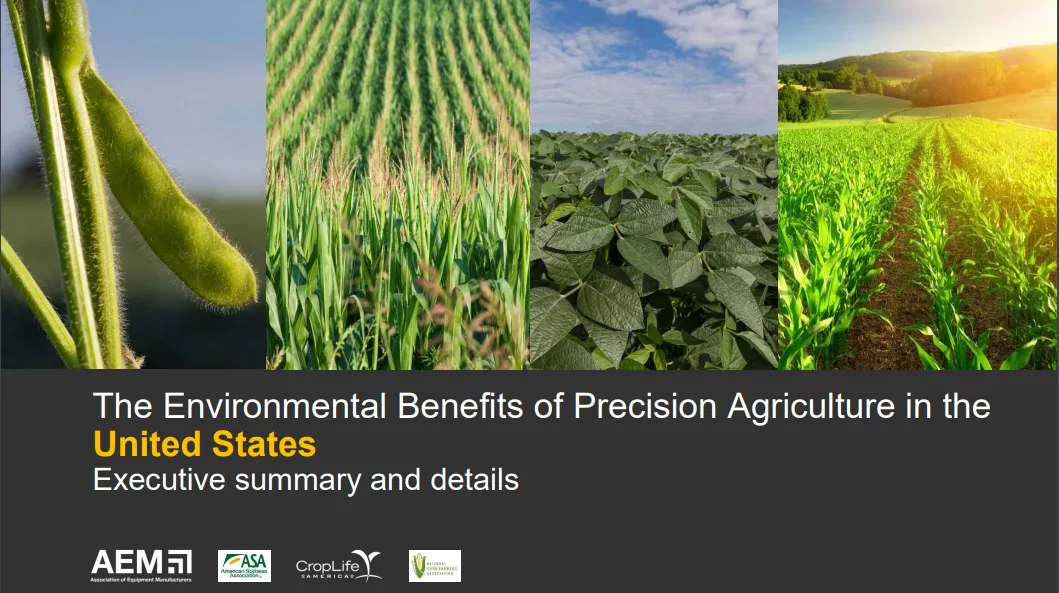Widespread adoption of precision agriculture technology allows farmers to grow more with less. 2021 studies from the Association of Equipment Manufacturers (AEM), in partnership with the American Soybean Association, CropLife America and National Corn Growers Association, found that precision ag tools provide economic return for farmers while also enhancing sustainability through more efficient use of land, water, fuel, fertilizer and pesticides.
"The Environmental Benefits of Precision Agriculture" study reports that productivity in the U.S. and Canada has increased by an estimated 4% due to adoption of auto guidance, variable rate and section control technology, compared to a world without any of those precision ag technologies. With broader use, researchers estimate yields could increase an additional 6%. In Canada, annual crop production could increase by an estimated 7%. More effective and resilient hybrids, better inputs and management practices, and improved on-farm technology are driving those increases.
Precision agriculture technology has improved fertilizer placement efficiency by an estimated 7%, according to the U.S. study, with the potential to improve an additional 14%. Auto guidance, variable rate and section control technology has also reduced the need for an estimated 30 million pounds of herbicide per year in the U.S., and if more farmers continue to use these precision ag tools, that could be reduced even further — preventing the application of 48 million pounds of herbicide per year.
Canadian growers would also experience additional benefits of increased precision agriculture adoption. Researchers estimate there would be a 16% improvement in fertilizer placement efficiency and herbicide application efficiency, 11% less fossil fuel use and 18% less water use annually.




![[Technology Corner] A Big Step Forward for Interoperability & Data Sharing](https://www.precisionfarmingdealer.com/ext/resources/2025/12/12/A-Big-Step-Forward-for-Interoperability--Data-Sharing.webp?height=290&t=1765565632&width=400)


